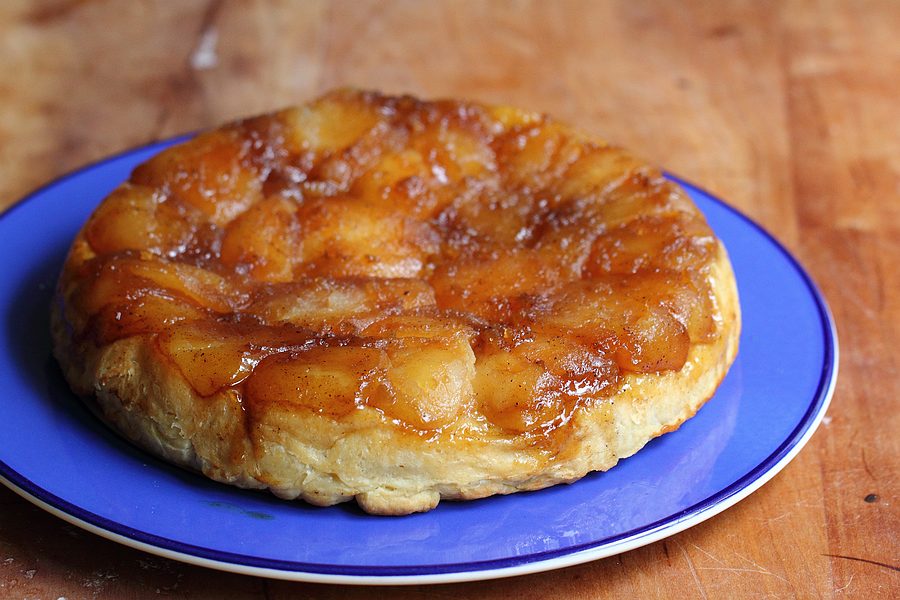
My daughter loves tarte tatin. My sister, conditioned by having worked in Paris as an au pair for a year when she was eighteen and studying French afterwards, loves it even more. Upon their request I made tarte tatin several times over the years. Even though I’ve always found tarte tatin somewhat intimidating and was expecting it to fall apart when turning it, it never did. The golden disk of pastry crowned with caramelized apples always inspired in me a sense of culinary pride.
Inspired by my successes, I bought a tarte tatin dish. Of course, once I had a special designated tarte tatin dish, my desire to make tarte tatin evaporated. Luckily, this beautiful cast iron pan is also perfect for making frittatas, baking cinnamon rolls, cakes and cornbread. You may recognize it from many pictures on this site.
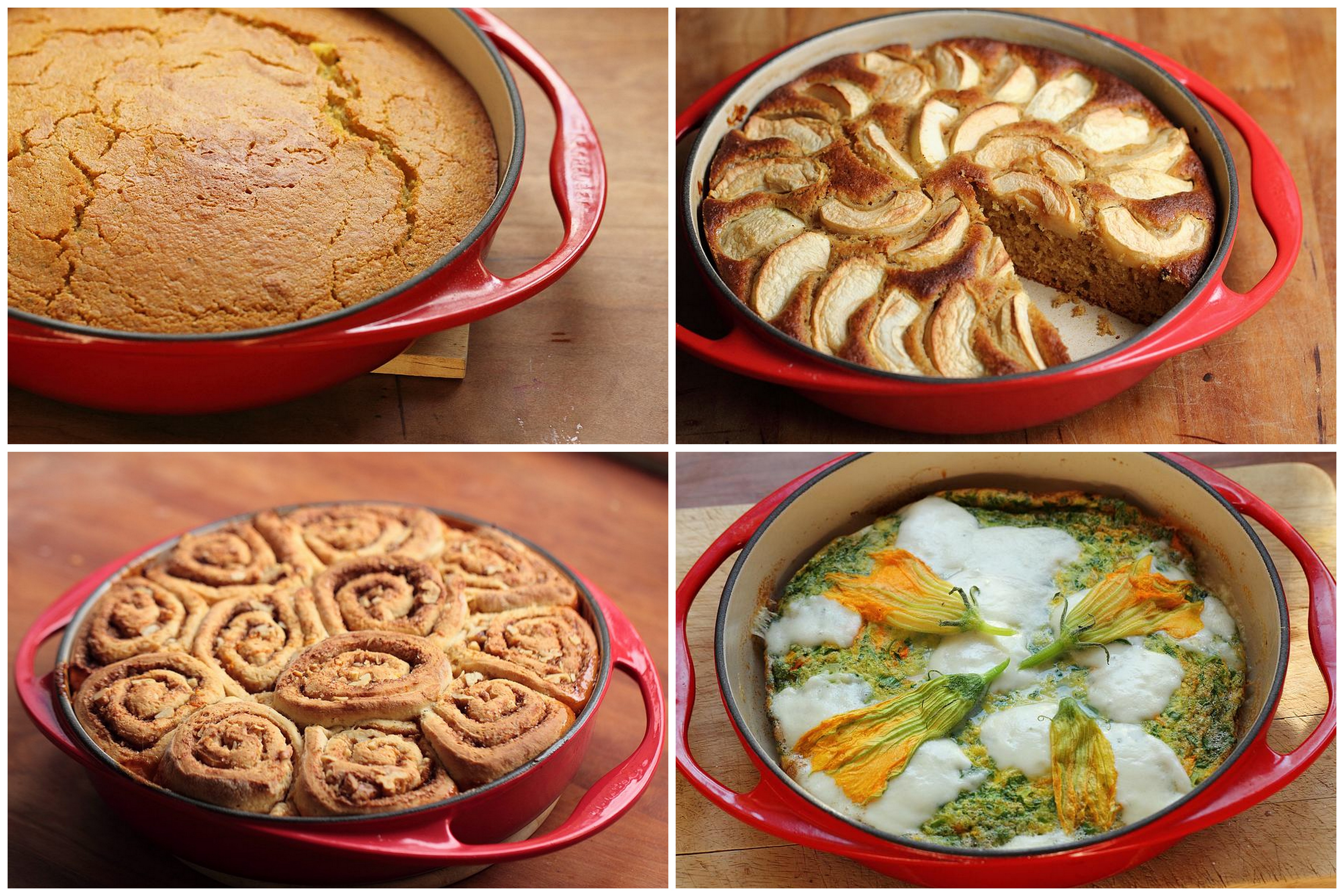
Nevertheless, it is a tarte tatin dish and deserves the courtesy to be used as such, at least once in a while. Last week I finally got around to it and made a tarte tatin that turned out to be the best to date. The main difference from the previous tarts was in the pastry: instead of shop bought puff pastry I used before, I made Danish pastry from scratch. That may sound insane, but just look at the previous post and you’ll see how incredibly easy it actually is.
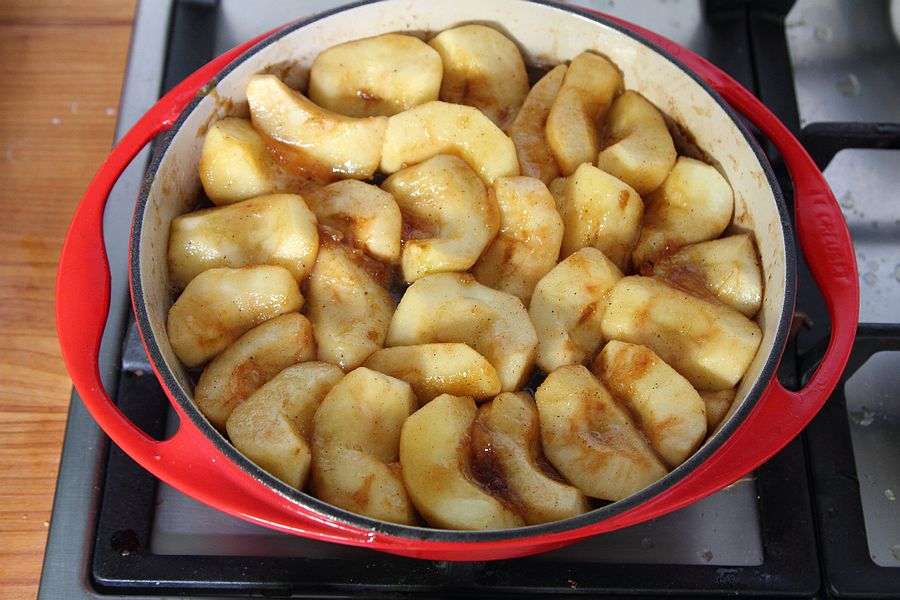
The yeasted pastry is even lighter and “puffier” than puff pastry. Also: this recipe calls for less sugar than many other recipes out there, which means that you can actually taste the apples and that is still the point, right? There is enough sugar though to make a beautiful golden caramel, because that is the point, too.
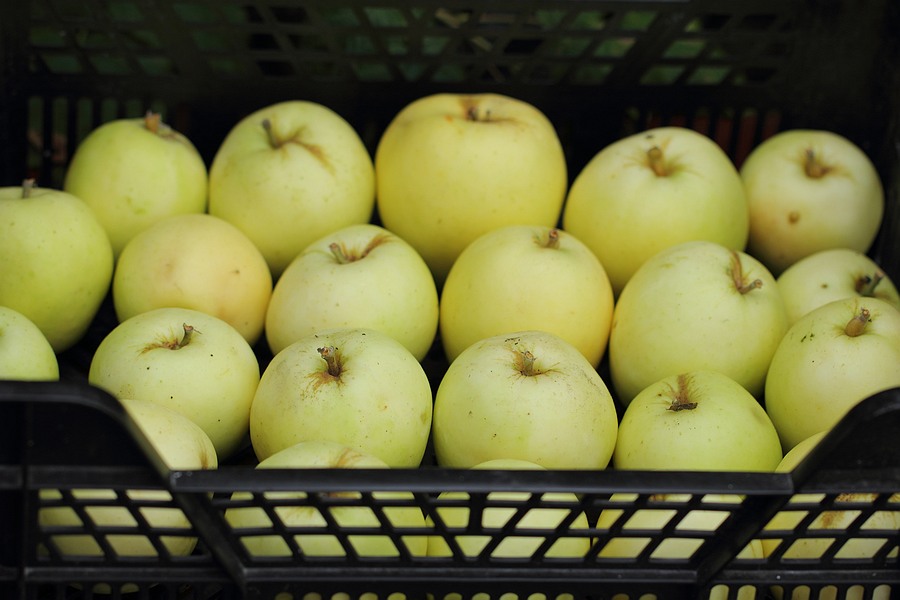
Apples: varieties such as Golden Delicious, Macintosh, Gala or Granny Smith are normally recommended, but I just use whatever apples are at hand. This time it was two apple varieties from our garden, namely: “Manks Codlin” and the-apple-that-was-in-the-yard-when-we-moved-in.
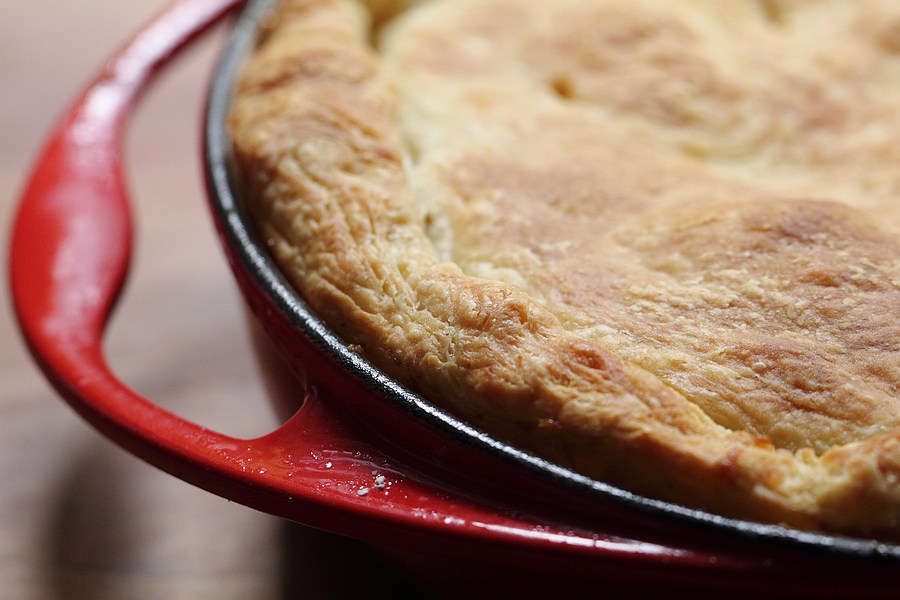
Danish pastry tarte tatin
Adapted from How to Be a Domestic Goddess: Baking and the Art of Comfort Cooking
with some helpful tips from Smitten Kitchen
half Danish pastry recipe
1 kg (2 ¼ pound or about 6) apples
100 g (scant ½ cup) butter
100 g (½ cup) sugar
Peel, quarter and core the apples.
Preheat oven to 200 degrees Celsius (400 F) and put in a baking sheet at the same time.
Melt the butter in a tarte tatin dish or cast iron frying pan. Add sugar and stir until a light caramel is made. It usually looks like it will split at some point, but if you whisk vigorously, it will come together again. Take the pan off the burner and put in the apples in a circular pattern, hump-side down. They might not fit all in a single layer at first, but will fit later after the fruit has cooked down a bit. Cook on medium heat until the apples soften (about 20 to 25 minutes), basting the fruit with the caramel juices from the pan. If the apples in the middle cook faster, you can swap them with apples that are cooking slower.
Take the pan off the heat and leave to stand for 10 minutes.
Roll the Danish pastry out into a circle somewhat bigger than the dish. Lay it on top of the apples, tucking it in around the edges. Transfer the dish to the baking sheet in the oven and bake for 20 to 30 minutes, until the top is golden.
Take the tarte out of the oven, put a large plate on top and turn carefully upside down (don’t forget to wear oven mittens!).
Remove the dish and admire your work, the golden pastry with caramelized apples on top.